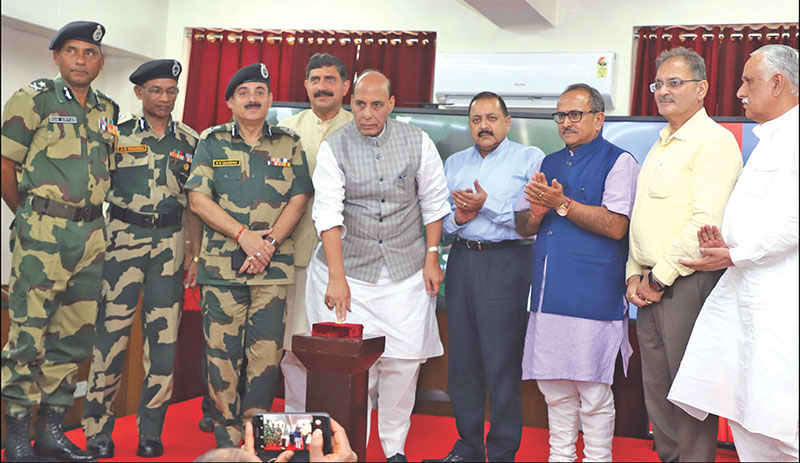CIBMS is an effective system and should be implemented soon to curb infiltration at the borders
Yunus Dar
India shares its borders, running into thousands of kilometres, with many countries. The most challenging stretch is the India-Pakistan border (IPB), which measures approximately 3,323 km, out of which some 1,225 km is in Jammu and Kashmir. The border extends to 553 km in Punjab, 1,037 km in Rajasthan and 508 km in Gujarat.

Border Out Posts (BOPs), which constitute the main workstations of the Border Security Force (BSF) along the borders, provide appropriate show of force to deter trans-border infiltration. The current strength of BOPs along the IPB currently stands at 656 held by the BSF. There is also a proposal to construct 93 composite BOPs along the IPB, which are supposed to provide the necessary infrastructure for accommodation, logistic support and combat functions of the BSF deployed along the border. The proposal is slated to be finished by 2020. More initiatives to curb border infiltration includes deployment of floodlights, 2043.7 km of which were sanctioned by the government along the IPB and more than 90 per cent of that has been completed, according to government sources. Fencing also significantly helps to reduce infiltration and over 2000 km of the IPB have been secured with appropriate fencing.
The latest innovation by the government of India has been the induction of Comprehensive Integrated Border Management System (CIBMS) along the borders. As the name suggests, CIBMS integrates all the available technologies and gadgets to ensure electronic surveillance of the border areas. Two pilot projects covering about 71 km on the IPB (10 km) and Indo-Bangladesh Border (IBB) (61 km) of CIBMS have been completed. The stage has been set now for taking up stage-II and stage-III covering about 1,955 km of the border which cannot be physically fenced. The CIBMS project is expected to vastly improve the capability of the BSF in detecting and controlling cross-border crimes like illegal infiltration, smuggling of contraband goods, human trafficking and cross-border terrorism.
According to the government, the CIBMS involves deployment of a range of state-of-the-art surveillance technologies — thermal imagers, infra-red and laser-based intruder alarms, aerostats for aerial surveillance, unattended ground sensors that can help detect intrusion bids, radars, sonar systems to secure riverine borders, fibre-optic sensors and a command and control system that shall receive data from all surveillance devices in real time. The belief is that the implementation of CIBMS projects on IPB and IBB will enhance the capabilities of the BSF.
Former Director General of the BSF, K.K. Sharma, pointed out that CBMS has helped the force in overcoming a number of challenges when it comes to infiltration and surveillance. “You need technological input in order to maintain dominance along the borders, in regard to the International Border (IB). The BSF guards the IB right on the zero line, meaning thereby our men being exposed to the elements of weather, the sniper fire from the other side. The Pakistan Rangers allege that the sniper fire is carried out by non-state elements, saying they don’t have any control over them. But it’s always done with the connivance of the Pakistan Rangers. So, my men are exposed to the enemy fire. We are always exposed to infiltration from the other side. On the other hand, the Pakistan Rangers are quite far away from the zero line. Whereas we are always on the zero line as we have to ensure infiltration doesn’t take place. They don’t have any kind of threat from our side as we don’t assist in any kind of infiltration from this side. Now, in order to give protection to my men, from sniping, from inclement weather, and most importantly, the human limitations, force multipliers are employed. A human being can make mistakes, but with the employment of more advanced gadgets and technologies, the chances of error reduce considerably. So, CIBMS is essential in order to make the borders more secure, and more importantly, it will lessen the burden on the BSF personnel.”
Sharma said he got the CIBMS installed before retiring from the service. “The CIBMS was inaugurated on stretches of 5 km each in Jammu when I was the DG. I went there with the then home minister and inaugurated it. The conception, execution and implementation of the system happened during my tenure.”
You must be logged in to view this content.

